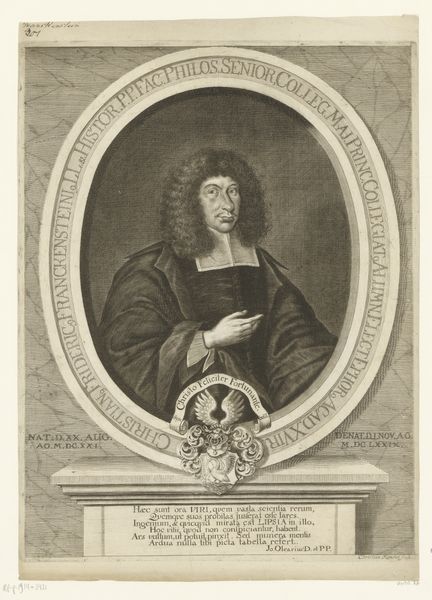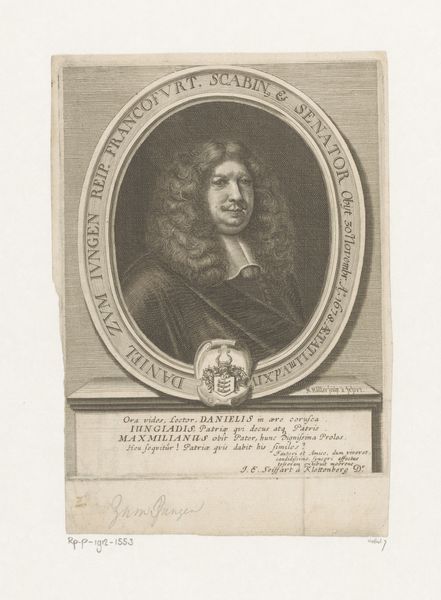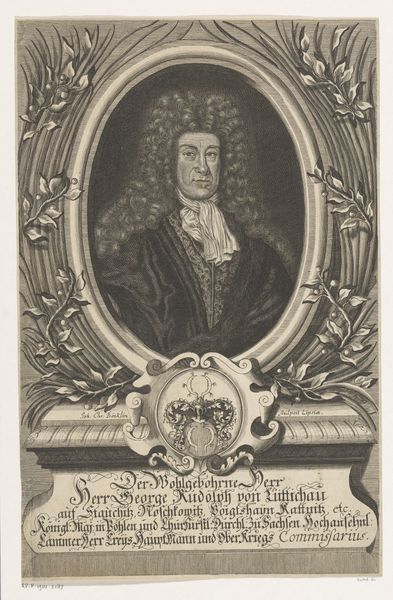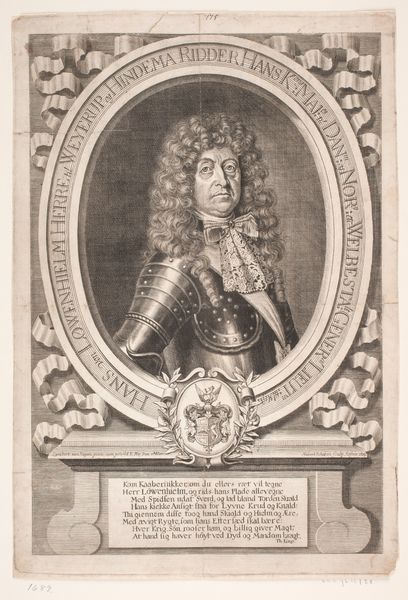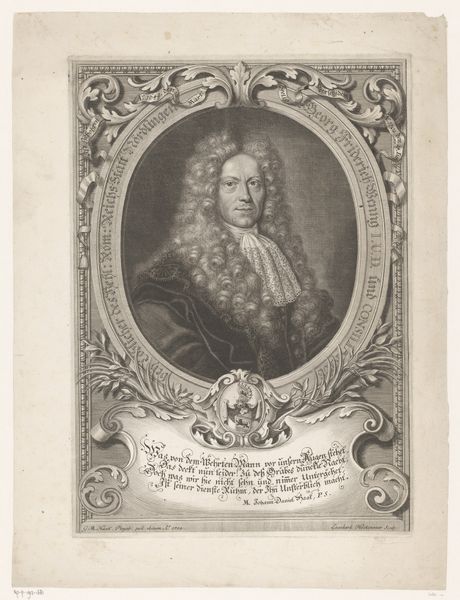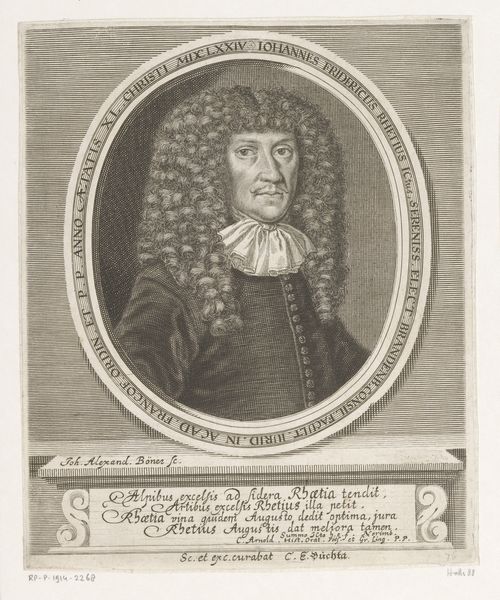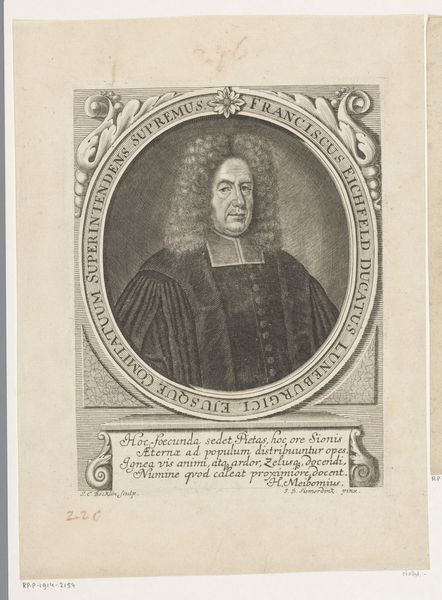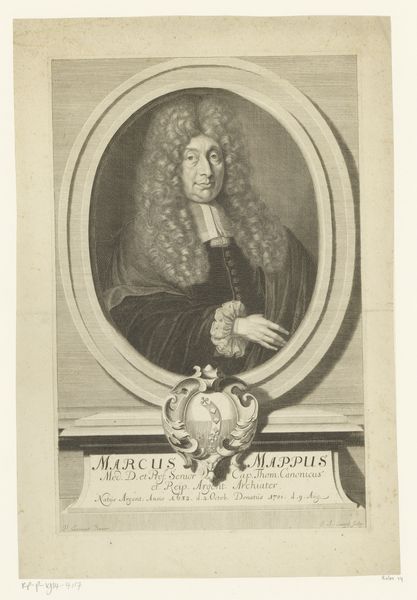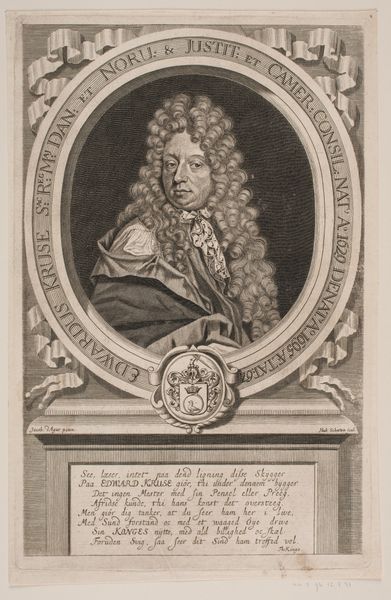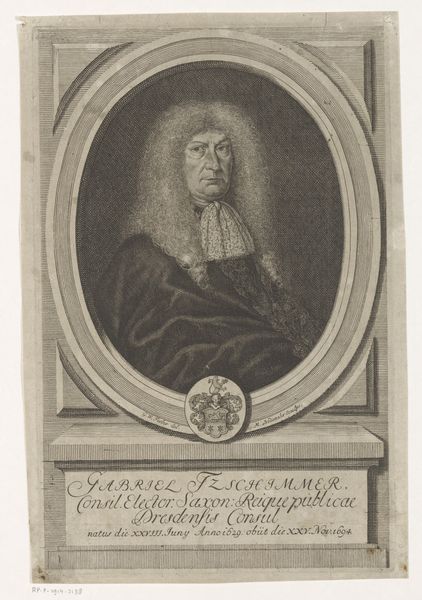
engraving
#
portrait
#
baroque
#
old engraving style
#
historical photography
#
academic-art
#
engraving
Dimensions: height 365 mm, width 268 mm
Copyright: Rijks Museum: Open Domain
Curator: Ah, yes, "Portret van August Benedict Carpzov." It's an engraving dating back to between 1665 and 1721, by Christian Romstet. You can really see the influence of the Baroque and academic styles here. Editor: My first thought? Hair! So much expertly rendered hair! It looks like he's peering out from a luxurious, leafy hedge, which, combined with the laurel wreath, gives the piece a slightly surreal vibe. Is he being celebrated or gently mocked, do you think? Curator: It's definitely celebratory. The wreath is an obvious symbol of honour and achievement. Consider too that during that time, the arrangement and texture of hair was meticulously coded—it reflected social standing and even moral character. Editor: So, less 'woke-up-like-this', more 'worked-all-day-to-look-this-good.' What about the inscription? I notice there are words and symbols within a heraldic shield. Curator: Precisely! The Latin inscription proclaims 'Pure hands are to be kept'. The heraldic shield amplifies that sense of civic responsibility and noble intent. Such symbology reinforced his importance, not just as an individual, but as part of a larger lineage and social order. The symbols act as a reminder of values upheld across generations. Editor: It’s interesting how these visual declarations of virtue become entwined with power. Looking at Carpzov's stoic expression, framed by all that glorious hair, it's as if the image is saying: "Behold, the embodiment of order!". But then I wonder: what aspects of himself was he perhaps hiding beneath this meticulously constructed image? Curator: That tension between the outward symbol and the inner life, the public persona and private self, that's the enduring fascination, isn’t it? The portrait serves as both a historical record and a cultural mirror, reflecting the values and anxieties of its time. Editor: I love that idea of the portrait as a cultural mirror! It invites us to look, not just at Carpzov, but at ourselves, and consider the masks we wear and the stories we tell about who we are. Curator: Indeed, images such as these remind us that the past isn’t simply gone, but lives on, encoded in the symbols and stories that shape our present.
Comments
No comments
Be the first to comment and join the conversation on the ultimate creative platform.

